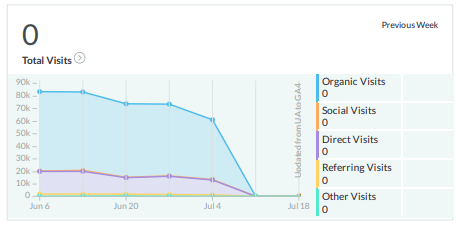Today… I’m gonna talk about pain…
If you’re working in marketing, you’ve certainly been through this: you had an idea / a concept and you’ve finally launched your new blog or website, filled with optimism and big dreams. You’ve spent countless hours crafting content, perfecting the design, and imagining how visitors from all over the world will flock to your site. However, the reality is often far less glamorous.
The initial excitement of publishing your first posts is quickly overshadowed by the daunting task of drawing in readers. Like many others, I too found myself constantly refreshing my analytics page, only to see the same disappointing figures: just a few visits, and all from the same few people.

It’s a common scenario that can be quite frustrating, especially when you expect instant results in today’s fast-paced digital world.
As a growth marketing manager and a blogger, I’ve been through this cycle of hope and despair.
But here’s a twist in my tale: as Mark Manson’s book “The Subtle Art of Not Giving a F*ck” recommends to do: I decided to stop worrying about these numbers altogether—at least for the initial months. Let’s check why…
Understanding the Marketing Mindset
Whether you’re running a multinational campaign or just blogging from your cozy home office, understanding the marketing mindset is crucial. I’ve learned a thing or two about what really moves the needle in terms of digital presence.
You might think that a “marketing pro” like myself would live and breathe analytics, constantly monitoring every dip and rise in traffic and engagement. But here’s the kicker—I don’t. At least, not in the way you might expect.
The marketing mindset isn’t just about reacting to numbers; it’s about understanding the stories behind them. It’s knowing when to observe, when to act, and when to ignore the noise. In the bustling world of digital marketing, where everything from SEO to social media metrics can dominate your strategy, it’s easy to get lost in the data.
However, in the first months of launching a new blog or site, I consciously choose to step back from analytics. This might sound counterintuitive, especially coming from a growth marketing manager. But the reason is simple: early-stage analytics often show more about your lack of reach—a natural part of starting new—than about the potential impact or appeal of your content. When you start something new online (especially while using a brand new and unknown domain – it’s long… insanely long to be recognised as potentially interesting content bringer to search engines and thor users).
This approach helps me focus on what really matters at this stage: building a solid foundation of quality content and a genuine connection with my audience. I prefer to lay down a robust groundwork that naturally attracts visitors, rather than tweaking and tailoring content prematurely based on initial analytics that don’t reflect long-term trends.

Why you should consider this approach too
Now, you might be wondering: if a growth marketing manager advises against obsessing over early analytics, should you consider doing the same? Absolutely 😊, and here’s why:
- Maintain Your Creative Focus: First and foremost, early blogging should be about passion and creativity. It’s your chance to explore topics that excite you and to share your unique perspective with the world. If you’re constantly checking your analytics, you might start tailoring your content to chase views, rather than expressing your authentic self. This shift can stifle your creativity and make blogging feel more like a chore than a passion.
- Cultivate Patience: Blogging is not a sprint; it’s a marathon. Initial analytics can be misleading, suggesting failure where there is potential. By ignoring these early numbers, you give yourself the space to grow at a natural pace without undue stress. This cultivates resilience, qualities essential for success in any long-term endeavor.

- Build Genuine Connections: When you’re not preoccupied with numbers, you have more energy to engage with your readers through comments or social media. This engagement often translates into a loyal audience over time. Remember, a small group of dedicated readers can be more valuable than a large but disengaged audience.
- Examples of Success: Consider bloggers and content creators who focused on quality and authentic engagement without succumbing to the pressure of early analytics. Many found that over time, their audience grew organically, leading to opportunities for monetization and collaboration that were aligned with their original goals.
When to start caring about analytics
It’s best to begin when you have a solid collection of quality content that reflects your niche and voice. Start paying attention to your analytics once your traffic becomes more consistent—this means regular interactions like comments and social media shares that show people are engaging with your work. Analytics at this stage can tell you which posts are popular, where your traffic is coming from, and how visitors are interacting with your site.
Once you’re ready to make strategic decisions—like adding new features or optimizing for search engines—data becomes invaluable. Also, consider using analytics when you have specific goals to measure, such as increasing your audience size, boosting engagement, or monetizing your blog. At the right time, analytics can provide actionable insights that align with your objectives, turning data into a tool for growth rather than a source of stress.

Comments